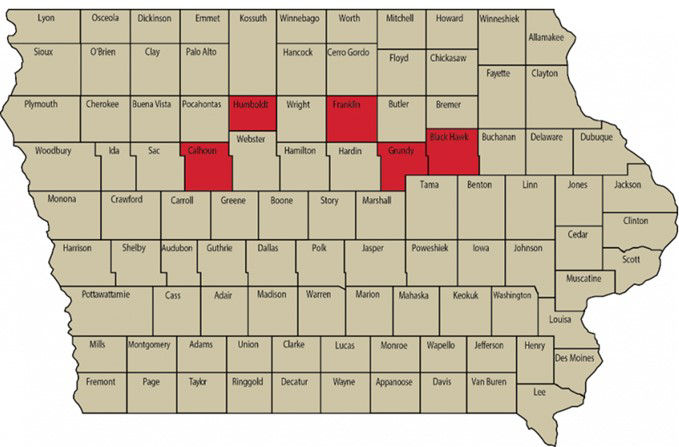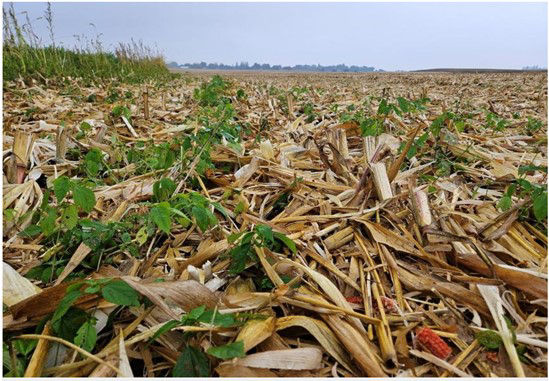Identification and Management of Asian Copperleaf
December 28, 2023
Asian copperleaf (Acalypha australis) is an invasive species of the spurge family native to Russia, China, Japan, and the Philippines. Currently, there are about 450 species within the genus that range from tropical to temperate climates. The first reported findings of Asian copperleaf were in New York in 1990 with no other findings reported until 2016 when it was discovered in Iowa. The current distribution in Iowa is isolated to five counties: Calhoun, Humboldt, Franklin, Grundy, and Blackhawk (Figure 1). Within the United States, the potential distribution could be up to 75 percent due to climatic zones suitable for growth (Zones 4-13). In Asia, at densities of 1.2 to 120 plants per square yard, the economic damage has been reported up to 50 percent.

Compared to similar plants in the spurge family, Asian copperleaf does not produce milk sap. Plants are upright and can reach three feet in height. Leaves are lanceolate, serrated, two-to-three inches long, and the bracts are located beneath the flower and range from circular to heart-shaped. Other copperleaf species in Iowa can be differentiated at flowering from Asian copperleaf by deeply lobed bracts. This species likes weak shading, filtered light, and naturally grows along riverbanks and in light forested settings but can be found under the canopy and along field edges within row crops in Iowa.
Asian copperleaf management is somewhat unknown in the United States due to its low prevalence. Some Asian and USDA row crop studies suggest that it could potentially have resistance or become resistant to PPO (14) and ALS (2) chemistries but has not been documented or tested in the United States. In Iowa, seeds have germinated later (mid-June) under the canopy and were about 18 inches tall at harvest (Figure 2). In corn especially, as a late germinating seed, control with a contact (non-systemic) herbicide may be difficult due to the height restrictions of many chemicals. Therefore, it is important to layer residuals in a two-pass system or apply full rates of multiple modes of action in a one-pass system.

Dan Etter
Channel Agonomist
Sources:
Anderson, M. 2023. Keep an eye out for Asian copperleaf. ICM News. Integrated Crop Management. Iowa State University Extension and Outreach. https://crops.extension.iastate.edu/cropnews/2023/09/keep-eye-out-asian-copperleaf
United States Department of Agriculture (USDA), Animal and Plant Health Inspection Service (APHIS). 2012. Weed risk assessment for Acalypha australis L. (Euphorbiaceae) – Asian copperleaf. https://www.aphis.usda.gov/plant_health/plant_pest_info/weeds/downloads/wra/Acalypha%20australis%20WRA.pdf
ZUO, S., MA, Y., and SHINOBU, I. 2008. Ecological adaptation of weed biodiversity to the allelopathic rank of the stubble of different wheat genotypes in a maize field. Weed Biology and Management, 8: 161-171. https://doi.org/10.1111/j.1445-6664.2008.00292.x
Abdiyeva, R. T. and Litvinskaya, S. A. 2021. New locations and distribution of the alien species Acalipha australis L. (Euforbiaceae) in Azerbaijan. The Institute of Botany, ANAS, Baku, AZ1004, Azerbaijan. Plant & Fungal Research. https://plantfungalres.az/uploads/2021/Abdiyeva,%20Litvinskaya.pdf.
Web sources verified 11/20/23 1110_336901